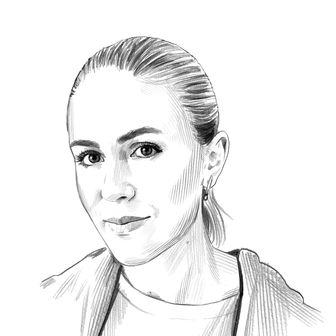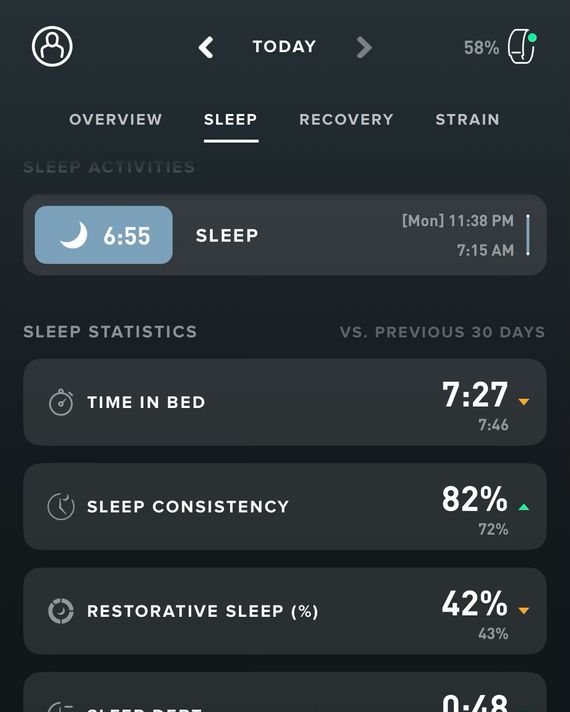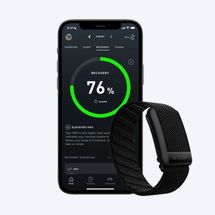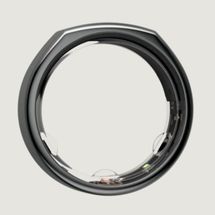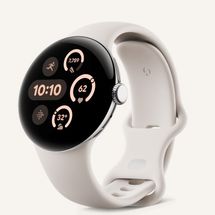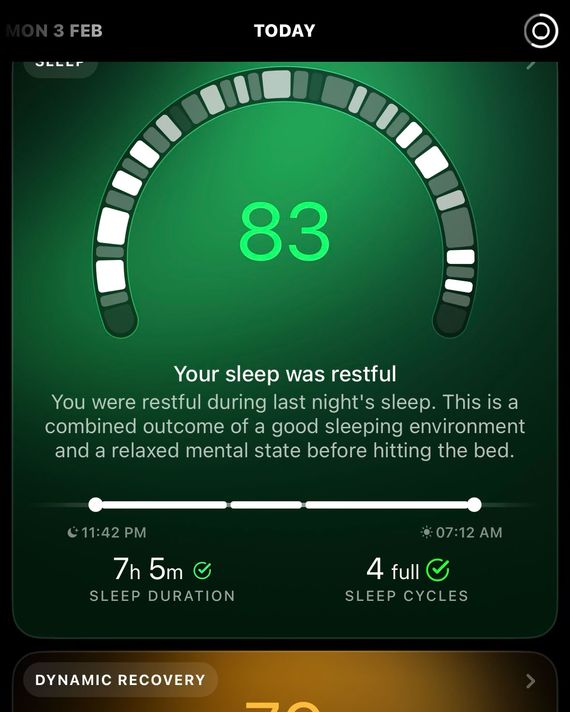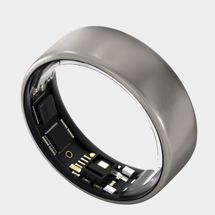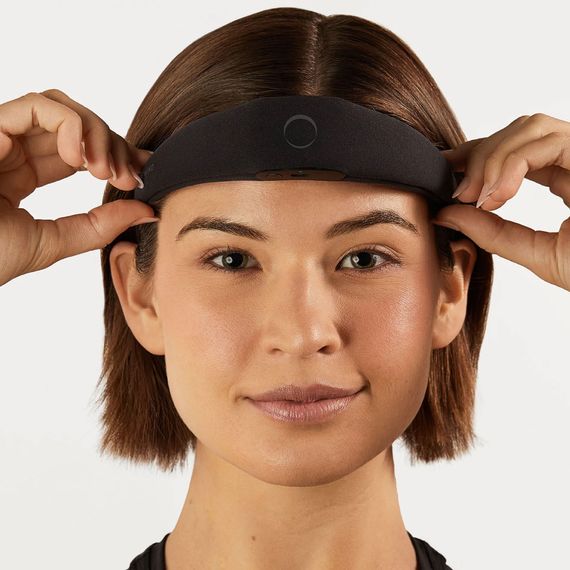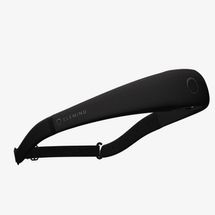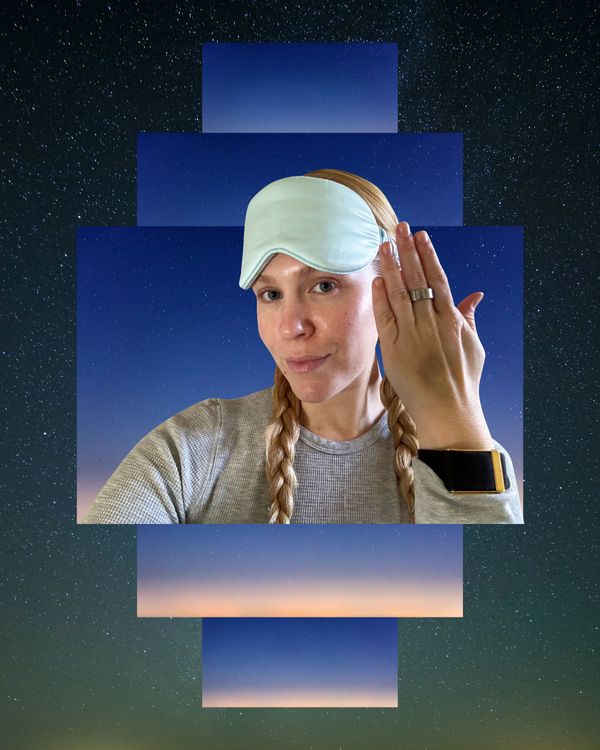
For more of the Cut’s favorite fashion, beauty, and home finds, sign up for the weekly Cut Shop Newsletter.
I am not a numbers person. However, tracking my sleep for the past few months has turned me into a Nasa-level data analyst. The first thing I do every morning is check my sleep score and mull over the health metrics that contributed to it, according to the five sleep-tracking devices I’ve been testing: the Whoop, Oura Ring, Google Pixel Watch, Ultrahuman Ring AIR, and Elemind.
These devices do similarish things — provide insight into your overall health by tracking your sleep, vitals, and workouts — but that is just scratching the surface. I would consider myself a very active person. Even so, I was intimidated when I first started using these devices since there was a lot of data to digest, so I spent almost two months testing them out. I wore them around the clock (as recommended), to the office, to strength training and SoulCycle classes, on my daily walks, to bars and restaurants, and to bed. The health insight I gained throughout was mind-blowing.
I also learned that each boasts unique features and complex technology, so deciding which is best for your lifestyle and health concerns can be hard. Below, I broke down everything you need to know about them. Should you buy the Oura Ring or the Ultrahuman Ring AIR? What is the difference between the Google Pixel Watch and the FitBit? Is the Whoop comfortable to wear? Which device is best for workouts? I answered all these questions.
Keep reading to find out which sleep-tracking device is best for you, based on health data, sleep data, fitness data, membership fees, aesthetics, accuracy, and more.
So, what is the best sleep tracking device?
➼ Whoop
➼ Oura Ring
➼ Google Pixel Watch
➼ Ultrahuman Ring AIR
➼ Elemind Headband
.
Whoop 4.0
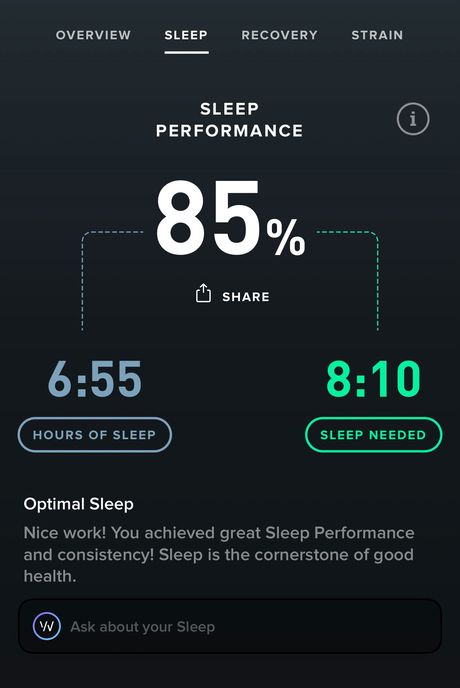
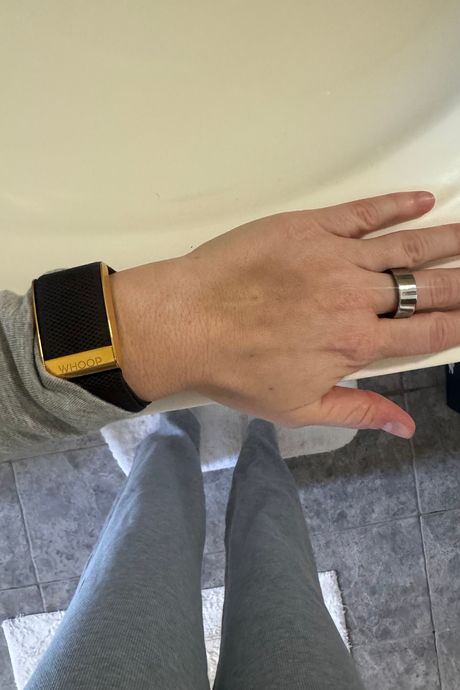
What I liked about the Whoop 4.0 was that it tracked my every movement, down to taking out the trash. It automatically calculated the type of movement I did, even without me punching it into the app. The first time I took a SoulCycle class while wearing it, I got a notification from the app asking if I had been indoor cycling or snowboarding (?). How in the world does it know that, I thought. Pretty impressive.
If you are a serious athlete or someone who wants in-depth health and sleep data, consider the Whoop.
It tracks: Live heart rate, respiratory rate, heart rate variability, resting heart rate, stress, blood oxygen, skin temperature, strain, sleep performance (,hours of sleep needed, time in bed, sleep consistency, restorative sleep, wake events, efficiency, respiratory rate, deep sleep, and REM sleep) recovery score, workouts, and activity (daily step count and calories burned).
You need a membership for the Whoop 4.0
But when you purchase the watch, it is not an additional cost. (The membership will automatically renew every year unless you cancel it.)
The pros
- This is especially helpful for people with anxiety — when I knew exactly which parts of my day increased my stress level, it became easier to manage.
- It adapted to my body quickly. It only took three days for the Whoop to gather enough data on my sleep, heart rate, respiratory rate, and average activity level to calculate my personalized recovery score.
- The app explains what each metric measures and how it affects me, so I know what I am looking at regarding heart rate variability, resting heart rate, and blood oxygen level. The Whoop also shares the average range for healthy adults in each category, which gives context.
The cons
- It’s really not cute. Sorry!
- I don’t love the fabric band because it gets sweaty and gross when I work out.
- And that brings me to my next point: The band is removable and washable, but it’s nearly impossible to get off. (I literally had to watch a YouTube tutorial called “How to change your Whoop strap” to figure it out.) Get the silicone SportFlex Band instead.
.
Oura Ring
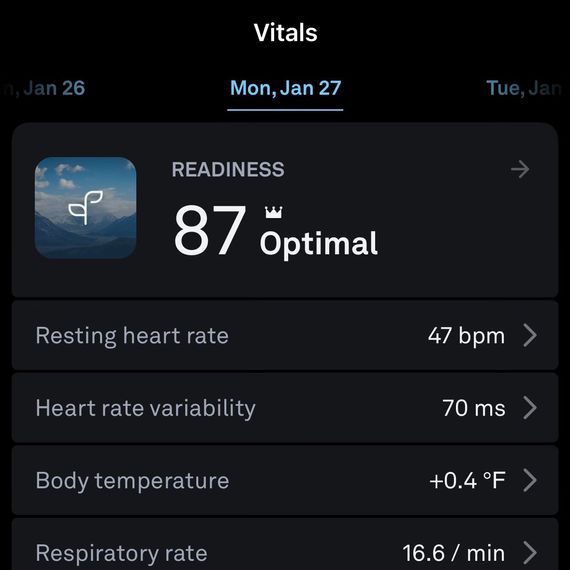
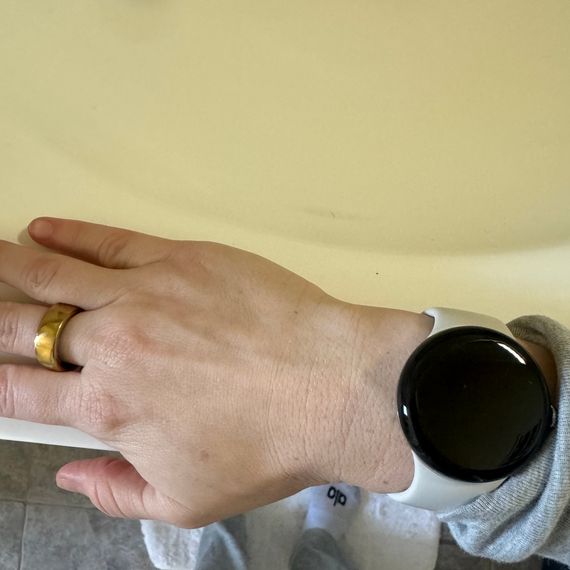
The Oura Ring allowed me to add tags and “discover connections between health and habits over time.” For example, things like joint pain, alcohol, jet lag, cold showers, and coffee all impacted my deep-sleep score (but you have to tag all those factors as you go for the Oura to track them.)
The Oura ring even tracks periods and is best for women’s health.
Anyone who gets a period will also love the Oura Ring — the cycle tracking feature helped me identify patterns, detect any irregularities, better understand my mood, and prepared me for my next period.
It also tracked heart rate, blood oxygen, body temperature, sleep performance, activity (daily step count and calories burned), workouts, chronotype, stress, and readiness, as well as sleep efficiency, restfulness, REM sleep, deep sleep, latency, and timing.
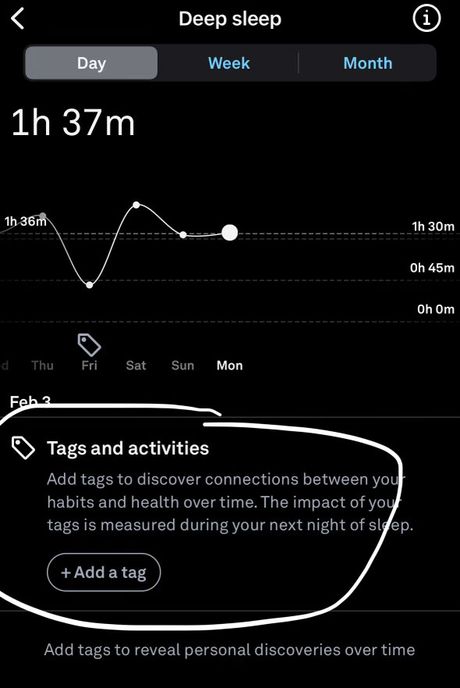
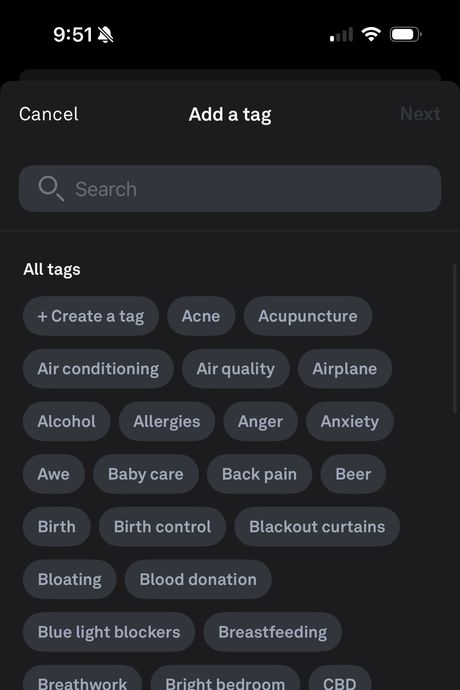
You need a membership for the Oura ring.
Yes, you need the $5.99 membership to unlock the more advanced features that make this device so special. (I don’t think the ring is worth the money if you don’t also purchase a membership.)
The pros
- It is the most accurate device on this list, especially regarding sleep tracking. The ring form enhances the accuracy because your finger is where the radial artery is most easily accessible — it is the same reason your doctor puts a pulse oximeter on your finger when you go in for your annual checkup.
- It also has the longest battery life of any device on this list.
- It can track your menstrual cycle after about two months of wear by analyzing your body temperature trends. Not only can I see what day I will start my period each month, but I can also see which phase of my menstrual cycle I am in (menstruation, follicular, ovulation, or luteal) at any given time on the app.
The cons
- It takes a while to fully calibrate, almost two months in my experience.
- A ring is a lot better-looking than a watch, but it can be annoying and slightly uncomfortable when lifting weights.
.
Google Pixel Watch
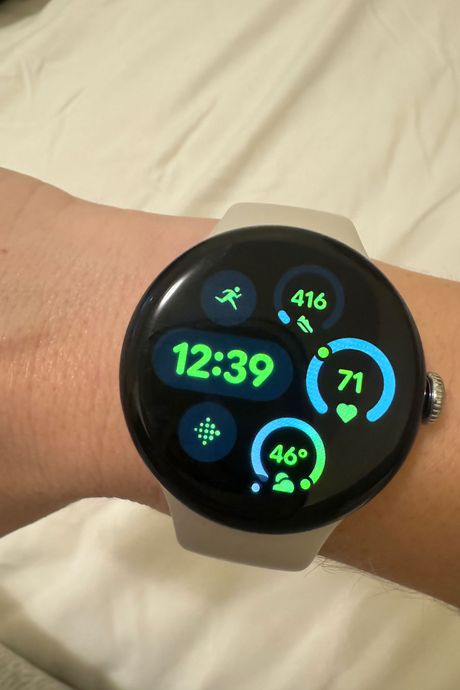
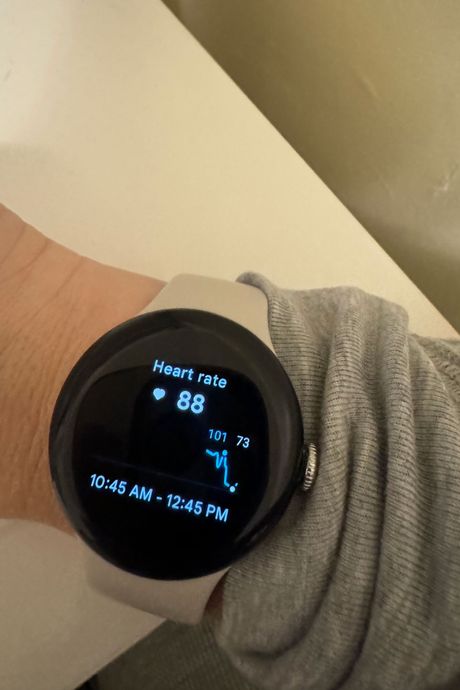
If you already own a Google Pixel Phone or Google Nest, you want to consider the Google Pixel Watch.
It tracked my activity (calories, step count, and GPS data), workouts, sleep, heart rate, resting heart rate, heart rate variability, blood oxygen, skin temperature, menstrual cycle, recovery, stress, cardio load, target load (your personal training goals). Note that some of the more science-heavy metrics, like menstrual cycle tracking, are only accessible via the Fitbit app, which comes pre-installed on the Pixel Watch. As well as my deep sleep, REM sleep, wake-up times, skin temperature, heart rate, blood oxygen.
What is nice about this watch is that you don’t need a membership.
You can track basic metrics like sleep and activity without one. However, the majority of interesting data comes from Fitbit Premium, which is pre-installed on the Pixel Watch. The watch comes with a free six-month trial but after that, you will need to subscribe to Fitbit Premium to continue using it.
The pros
- You can access Google Assistant directly from your watch, which is helpful if you like using the voice commands feature, need to Google something quickly, or want hands-free control of your smart home devices.
- It is one of the prettiest smart watches on the market.
- You can review some metrics — including step count, workout summaries, and sleep data — on the watch face without using the app, unlike the other sleep-tracking devices on this list.
The cons
- The major con is that this tracker really doesn’t even work unless you already have a Google Pixel phone or smart home device, since the Google Pixel Watch app is only available on Google Play.
- The setup process is extremely tedious and involves downloading several different apps if you want to see all the data. I was annoyed that I got the Google Pixel Watch but had to set up a Fitbit account just to use all the features.
- It dies so quickly, especially compared to the other devices on this list.
.
Ultrahuman Ring AIR
If you are a serious athlete or want extremely in-depth health and sleep data, consider the Ultrahuman Ring.
It tracked my activity (steps, calories burned, timing and frequency of movement, and active hours), stress, heart rate, heart rate variability, resting heart rate, and body temperature. And one particularly interesting feature is that it can track your cardio age (yes, this device can measure the estimated age of your cardiovascular system).
The Ultrahuman ring had some of the most in-depth sleep data from all the devices.
It tracked sleep efficiency, temperature, restfulness, total sleep, heart rate drop, timing, restorative time, deep sleep, REM sleep, lowest heart rate, tosses and turns during sleep, morning alertness, and oxygen saturation.
You don’t need a membership
It comes with a lifetime subscription.
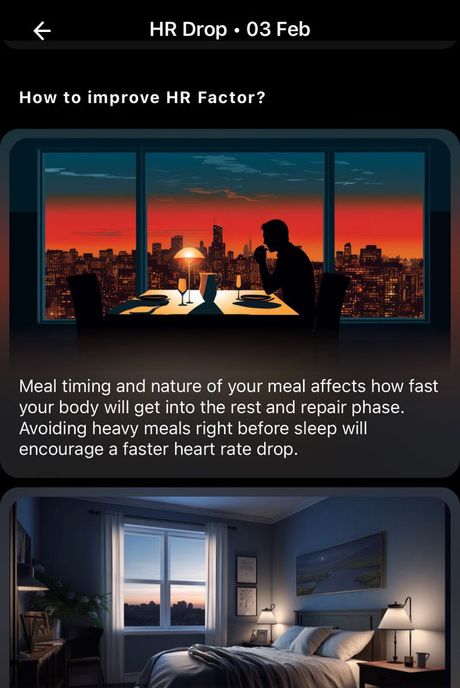
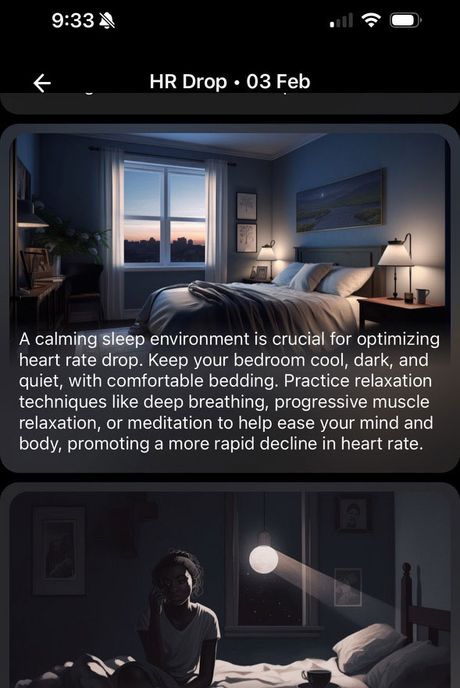
The pros:
- The setup process is so quick and easy.
- The app has a “Discover” tab that features everything from self-improvement podcasts and guided meditations to virtual workout classes, bedtime stories, and soundscapes.
- I prefer the look of the Ultrahuman Ring over the Oura Ring because it has sharper edges, whereas the Oura Ring has rounded edges that make it look bulky at time.
- The app gives you tangible advice for improving each metric. For example, last night my recovery score was low because my heart rate variability (HRV) was lower than usual. The Ultrahuman told me that factors like mealtime, the nature of my meals, my sleep environment, and late-night stimulants can all contribute to HRV. I know my body was stimulated because I worked late — the app made it so easy to draw a connection between my day and my recovery score.
The cons:
- It takes forever to ship — about four to six weeks.
- The heart rate tracking isn’t always the most accurate.
- On that note, the Ultrahuman is better for tracking sleep than it is for tracking workouts.
.
Elemind Sleep Headband
As someone who generally has a hard time falling asleep, I was skeptical but I did successfully fall into a light sleep within about eight minutes of lying down (according to the data I was able to review after). I did continue to wake up a bit, but that was only because I never made it to a full REM within my hour nap, and it mainly was lighter sleep.
If you’re looking for a product that will help you fall asleep and also help with your sleep cycle, consider the Elemind.
How it works is that it tracks your EEG brain signals and responds in real-time with acoustic stimulation (a sound tailored to your own brainwaves) to help you fall asleep faster. Unlike most sleep trackers that just let you know when you fell asleep and for how long, the goal of the Elemind headband is to help you actually fall asleep and stay asleep. I mean it was founded and created by MIT neuroscientists, after all.
It tracks all the sleep data.
Including deep sleep, light sleep, REM, sleep efficacy, wakefulness, restlessness, how long it takes to fall sleep asleep, and brain-wave data.
You (kind of) need a membership
You can simply purchase the headband itself and use the device sans the app. But with the app, you’ll have access to all your sleep-tracking metrics including brain-wave data. App memberships start at $6.99.
The pros:
- Another great pro is that the headband is also designed to help travelers sleep on long-haul flights and trips and also help them adjust to time zones and get over jet lag quicker.
- It’s surprisingly comfortable! The headband is made of supersoft foam and spandex so you really don’t even feel it — even if you’re on your side.
The cons:
- I don’t know about you, but I wasn’t exactly sold on having something sitting on my head while I’m sleeping. I can barely keep an eye mask on sometimes. So some people might get put off by that.
- I also think this is a product you actually have to be consistent with in order to get true effective results, so patience is key here, and some people might not want to give it the proper time.
